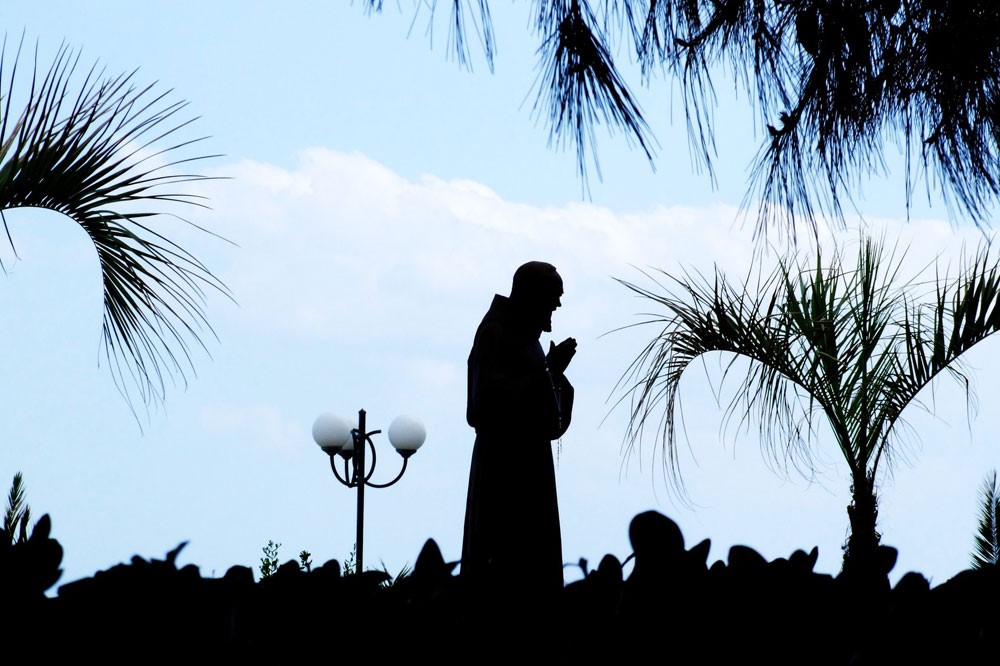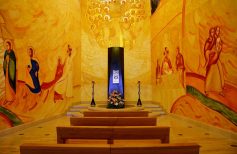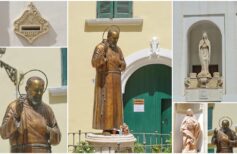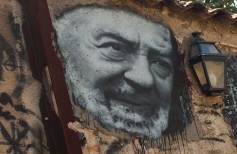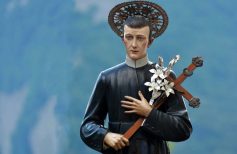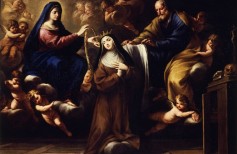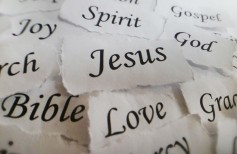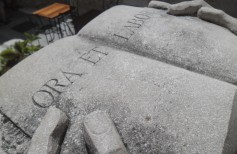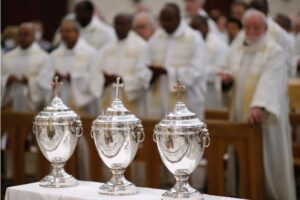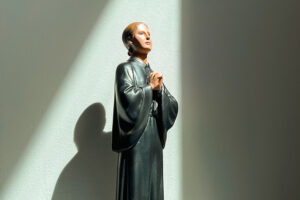What makes Padre Pio, known today as Saint Pio from Pietralcina, such an adored and celebrated figure since he was still alive, and yet so discussed? The popular adoration he received since his youth is probably due to his fame as thaumaturge, to the miraculous events of which he is said to be protagonist, the same for which he also received many criticisms even from the ecclesiastical world.
We surely need to remember the human and spiritual adventure of this man. He was born and lived between two centuries, crossed the XX century, with the two World Wars and all the disorders that changed Europe and the world face, but yet, he didn’t lose his passionate spirit, and at the same time he was so human that he liked jokes and funny stories. The same way we have to remember what he did for many, many people, who, directly or indirectly, turned to him looking for help and comfort. His human and religious impact really marked a century, and his memory keeps arousing conflicting emotions and such a strong devotion that it is quite impossible to ignore him.
His human life is quite popular.
He was born in Pietralcina, in Benevento, in 1887, son to humble farmers. He was baptized with the name of Francesco Forgione. His mother was a very pious woman, completely devoted to Saint Francis of Assis, and that love for the poor of Assisi is the reason behind his name Francesco.
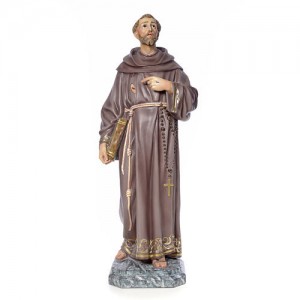
He showed interest towards a religious life since he was young, entered a convent when he was only fourteen, and soon took the cloth as Capuchin friar, with the name of Fra (Friar) Pio. In the following years, he lived and studied between the convent of Serracapriola and Pietralcina, often forced to rest because of his delicate health, which will haunt him his whole life. Already in this first period of life, he experienced spiritual events out of the norm, among which the “temporary” stigmata, wounds that appeared and disappeared on his hands for years, and his frequent dialogues with God. He became priest at only 23, in 1910. In 1916, he went for the first time to the convent in San Giovanni Rotondo, where he will stay, following Jesus “suggestion”, who would assure him that place would be good for his health.
In San Giovanni Rotondo Padre Pio received the “final” stigmata after some visions, and they will never disappear; at the same time, he was said he scented like sweet flowers, which anyone going close to him would smell. Other miraculous signs that will show from this moment and will lead to his beatification are the bilocation, prophecy, devotees’ mind and heart reading. The convent where he stays becomes soon a place of pilgrimage from of all over the world. This will also bring hostile reactions, investigations on the man and religious person, which will lead the public opinion and the Church itself to split in two about the priest; he was forbidden to celebrate the mass and offer the confession for some time. That would not discourage his devotees though, nor did it end the pilgrimage to San Giovanni Rotondo, they got even more intense. Some European royals also visited him, and around Padre Pio, the ‘living Saint’, a real cult was born, which spread relentlessly, especially after World War II.
When he died on September 23rd 1968, more than a hundred thousand people attended his funeral. He was beatified in 1999, and sanctified in 2002 by Pope John Paul II, with the name of Saint Pio of Pietralcina. He his celebrated on September 23rd since then, and is considered protector of the volunteers of the civil protection and of catholic youth.
Many miracles were attributed to him, but the one that granted him sanctity was the healing of Matteo Pio Colella, a seven-year-old kid affected by a sudden bacterial meningitis and considered hopeless by doctors. His parents and many Padre Pio followers moved for him, and many others began praying, addressing their pleas to the Friar from Pietralcina, who was already long dead at the time. Both Matteo’s mother and the boy, after he woke up from the coma, stated they had a vision of Padre Pio. The young boy got better, was released from hospital and healed completely, against all odds.
He was attributed with many prophecies as well; the most famous is probably the one involving Karol Wojtyla, the future Pope John Paul II. In 1947, Padre Pio met him and predicted his rise to the papal throne, but also the terrible aggression he would have to face. There are no proofs that the Pope received this prediction though.
After fifty years from his death, Padre Pio of Pietralcina is still object of an amazing popular devotion, but also of criticism and doubts, which anyway don’t overshadow the unconditional love of those believing and relying on him, and the many issues tied to his extraordinary experience as a man and a priest.
The Capuchin order
It is impossible to talk about Padre Pio without the smallest hint to Capuchin Minor Friars, the religious order he belonged to. It is one of the so-called Mendicant Orders, born after the experience and model offered by Saint Frances. Following the example of Saint Frances, the Capuchins preached the return to the Church absolute poverty in particular, a value that at the time of the order foundation, around 1520, was a bit lost. A Franciscan friar, Matteo da Bascio, gathered some of his brothers who shared his thought and his aspiration to go back to a humble and simple life, made of prayer, hermitage and service towards poor and needing people. The ecclesiastical Authority, frowned upon those ideas, even though very noble, especially in a time where the Lutheran Reformation made the Catholic Church instable and every dissident position was considered a potential threat.
Da Bascio and his followers were not subversive though. They just wanted to live their human and spiritual existence according to the principles of poverty. In order to do that, at the beginning they looked for hospitality at the Camaldolese monks, to whom they owe the characteristic garment with the hood, from which they will take the name from. Later, they were granted to live as hermits in complete poverty and preaching to poor, and were able to establish as hermit Minor Friars, thanks to the approval bull “Religionis Zelus” granted by Pope Clement VII in 1528. The order became bigger and bigger between 1600 and 1700 when many convents were built, especially in France, but also in missions. In fact, the Capuchins turned out to be great preachers, and thanks to this gift, they operated as missionaries everywhere, obtaining a great appreciation.
Today Capuchins belong to the three male orders part of the Franciscan Family: the Friars Minor (called also Observants), the Friars Minor Conventuals and the Friars Minor Capuchin. The Franciscan family is the biggest and most varied spiritual family of the Church. In it, there are friars, nuns and laymen united by the charisma of Saint Francis of Assisi and by the will to live following his precepts of poverty, obedience and chastity. In Latin the capuchin order was called Ordo fratrum minorum capuccinorum, whose acronym O.F.M.Cap. is still used in some contexts. Besides the hooded garment, the Capuchins inherited the tradition to wear beards from the Camaldolese monks. Still today, Capuchins’ characteristics are a long and unshaved beard, the typical light brown tunic with a big hood on the shoulders and a rope as belt.
The reasons that brought so many followers and benevolence to the Capuchin friars from people, and with time also from the ecclesiastical hierarchies, are their choice to live a simple and poor life, dedicated to contemplation and prayer; their ability as preachers, given their deep empathy, which let them come into contact even with the simplest and ignorant people, through a comprehensible spiritual dialog so that everyone could understand immanent matters, problems and needs; their will to be close to people, to help them also in their material struggles, to be “friars for the people”, friars of the world.
The strong key of this order, besides the austerity and sanctity of their lives, is still today their ability to enter the local societies with many initiatives dedicated to the community wellbeing. Their service is not only religious apostolate, but also social, addressed to the healing and wellbeing of the devotees, to charity and so on. Prayer then, alone or shared with brothers and devotees; but also preaching, confessions (Padre Pio is an example in that, given the amazing number of confessions – it is said to be about six hundred thousand people – he collected in his life), prayer groups, spiritual listening and guidance, often tied to local churches, help to the sick, prisoners, drug-addicts, the poor, but also young people. Many are the associations and brotherhoods connected to the Capuchin friars whose goals are beneficial and assistance activities all over the world. Even the activities of missionaries abroad is still going on, both as practical support (food, medicines, cures) and spiritual apostolate, in Africa, Asia and America.

